
Caliban is the second-largest retrograde irregular satellite of Uranus. It was discovered on 6 September 1997 by Brett J. Gladman, Philip D. Nicholson, Joseph A. Burns, and John J. Kavelaars using the 200-inch Hale Telescope together with Sycorax and given the temporary designation S/1997 U 1.

Setebos is one of the outermost retrograde irregular satellites of Uranus. It was discovered on 18 July 1999 by John J. Kavelaars et al. and provisionally designated S/1999 U 1.

Kale, also known as Jupiter XXXVII, is a retrograde irregular satellite of Jupiter. It was discovered in 2001 by astronomers Scott S. Sheppard, D. Jewitt, and J. Kleyna, and was originally designated as S/2001 J 8.
Sycorax is the largest irregular satellite of Uranus. It was discovered in September, 1997 on the Hale Telescope in California. Sycorax's orbit is retrograde, irregular, and much more distant than that of Oberon, the furthest of Uranus' regular moons. With a diameter of over 150 kilometres (93 mi), it is the largest irregular moon of Uranus. It has been theorized that Sycorax is a captured object, as opposed to one formed with Uranus.
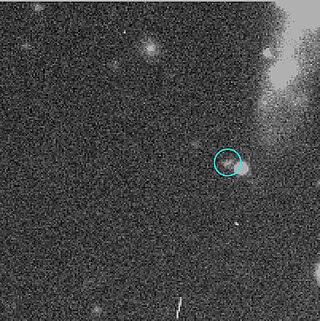
Prospero is a relatively small retrograde irregular satellite of Uranus discovered on 18 July 1999 by the astrophysicist Matthew Holman and his team, and given the provisional designation S/1999 U 3. Confirmed as Uranus XVIII it was named after the sorcerer Prospero in William Shakespeare's play The Tempest.

Harpalyke, also known as Jupiter XXII, is a retrograde irregular satellite of Jupiter. It was discovered by a team of astronomers from the University of Hawaii led by Scott S. Sheppard in 2000, and given the temporary designation S/2000 J 5. In August 2003, the moon was named after Harpalyce, the incestuous daughter of Clymenus, who in some accounts was also a lover of Zeus (Jupiter).
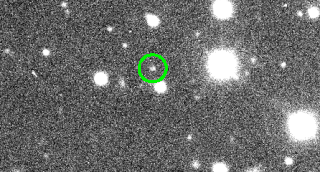
Hermippe, also known as Jupiter XXX, is a natural satellite of Jupiter. It was discovered concurrently with Eurydome by a team of astronomers from the Institute for Astronomy of the University of Hawaii led by David Jewitt and Scott S. Sheppard and Jan Kleyna in 2001, and given the temporary designation S/2001 J 3.

Praxidike, also known as Jupiter XXVII, is a retrograde irregular satellite of Jupiter. It was discovered by a team of astronomers from the University of Hawaii led by Scott S. Sheppard in 2000, and given the temporary designation S/2000 J 7.

Iocaste, also known as Jupiter XXIV, is a retrograde irregular satellite of Jupiter. It was discovered by a team of astronomers from the University of Hawaii including: David C. Jewitt, Yanga R. Fernandez, and Eugene Magnier led by Scott S. Sheppard in 2000, and given the temporary designation S/2000 J 3.

Autonoe, also known as Jupiter XXVIII, is a natural satellite of Jupiter.

Stephano is a retrograde irregular satellite of Uranus. It was discovered by Brett J. Gladman, et al. in 1999, and given the provisional designation S/1999 U 2.

Trinculo is a retrograde irregular satellite of Uranus. It was discovered by a group of astronomers led by Holman, et al. on 13 August 2001, and given the temporary designation S/2001 U 1.
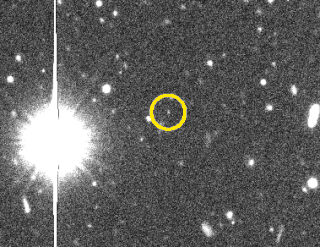
Margaret is the only known prograde irregular satellite of the moons of Uranus. It was discovered by Scott S. Sheppard, et al. in 2003 and given the provisional designation S/2003 U 3.
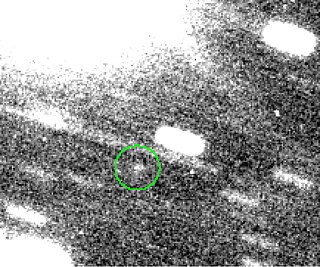
Ferdinand is the outermost retrograde irregular satellite of Uranus. It was first seen near Uranus by Matthew J. Holman, John J. Kavelaars, Dan Milisavljevic, and Brett J. Gladman on August 13, 2001 and reobserved on September 21, 2001. The object was then lost with no confirmation it was actually orbiting around Uranus.

Halimede, or Neptune IX, is a retrograde irregular satellite of Neptune. It was discovered by Matthew J. Holman, John J. Kavelaars, Tommy Grav, Wesley C. Fraser and Dan Milisavljevic on August 14, 2002.
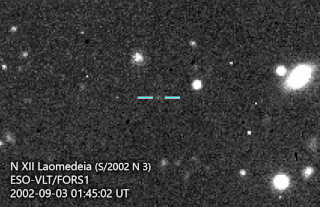
Laomedeia, also known as Neptune XII, is a prograde irregular satellite of Neptune. It was discovered by Matthew J. Holman, et al. on August 13, 2002. Before the announcement of its name on February 3, 2007, it was known as S/2002 N 3.

Neso, also known as Neptune XIII, is the second-outermost known natural satellite of Neptune, after S/2021 N 1. It is a retrograde irregular moon discovered by Matthew J. Holman, Brett J. Gladman, et al. on 14 August 2002, though it went unnoticed until 2003. Neso is the second-most distant moon of Neptune, with an average orbital distance of nearly 49.6 million km. At its farthest point of its orbit, the satellite is more than 72 million km from Neptune. This distance exceeds Mercury's aphelion, which is approximately 70 million km from the Sun.

Psamathe, also known as Neptune X, is a retrograde irregular satellite of Neptune. It is named after Psamathe, one of the Nereids. Psamathe was discovered by Scott S. Sheppard and David C. Jewitt in 2003 using the 8.2 meter Subaru Telescope. Before it was officially named on February 3, 2007, it was known by the provisional designation S/2003 N 1.

Uranus, the seventh planet of the Solar System, has 28 confirmed moons. The 27 with names are named after characters that appear in, or are mentioned in, William Shakespeare's plays and Alexander Pope's poem The Rape of the Lock. Uranus's moons are divided into three groups: thirteen inner moons, five major moons, and ten irregular moons. The inner and major moons all have prograde orbits and are cumulatively classified as regular moons. In contrast, the orbits of the irregular moons are distant, highly inclined, and mostly retrograde.

Bestla or Saturn XXXIX is a retrograde irregular moon of Saturn. Its discovery was announced by Scott S. Sheppard, David C. Jewitt, Jan Kleyna, and Brian G. Marsden on 4 May 2005, from observations taken between 13 December 2004 and 5 March 2005.





















